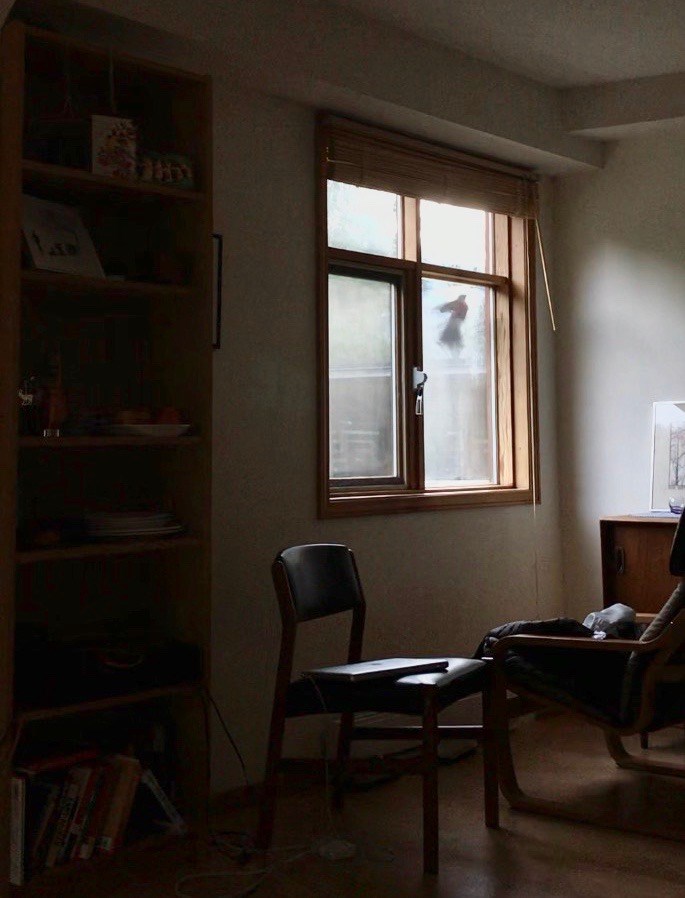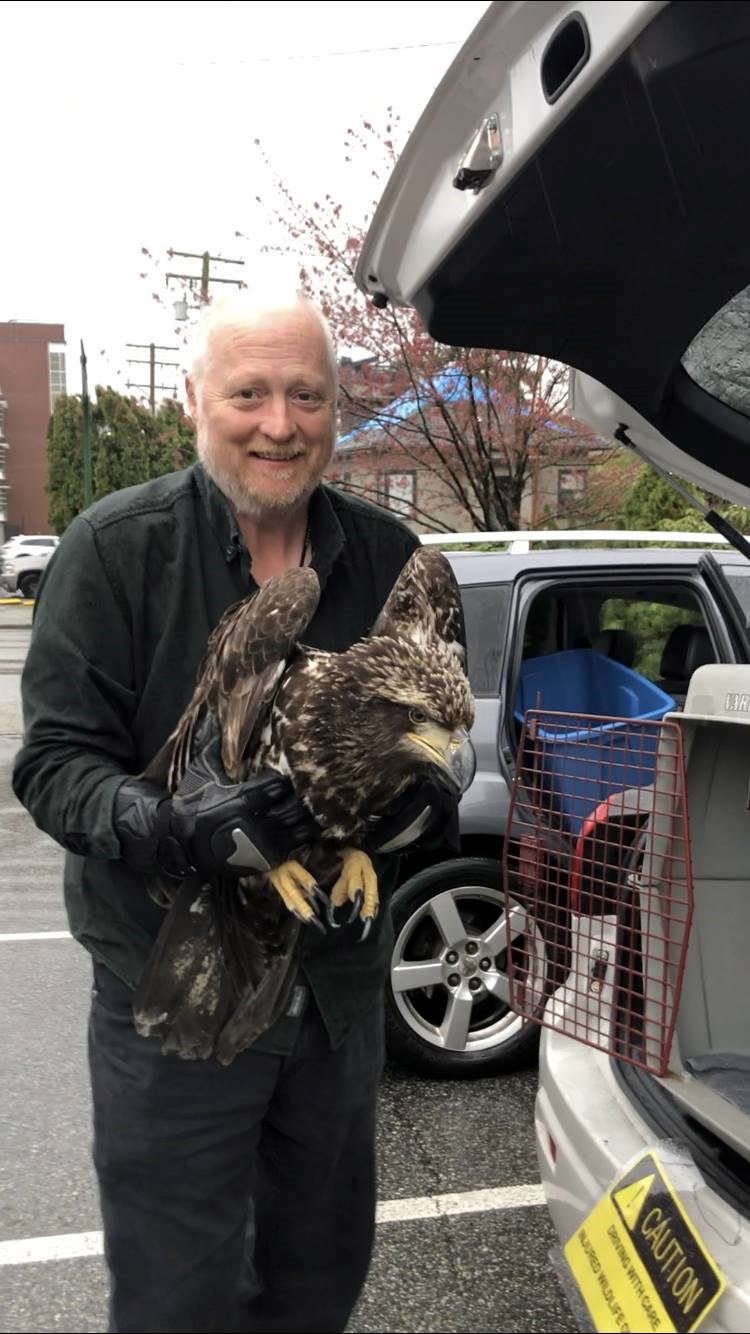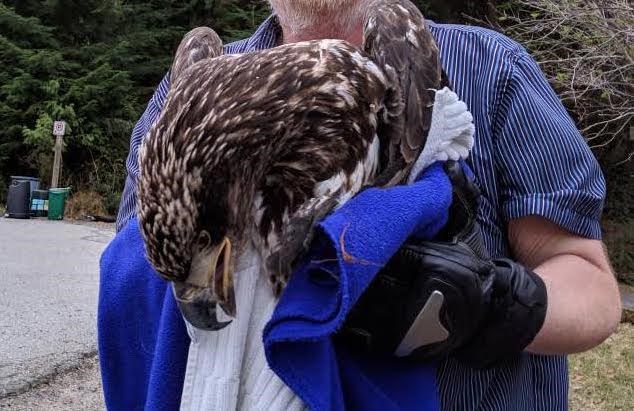There’s a robin that keeps flinging himself against my window.
For four weeks now, I’ve woken to a thump patter patter, thump patter patter, every morning. I get up to see a flicker of a red breast flitting off into the woods. The robin continues throughout the day, though if he senses movement inside the house, he flies away. Google tells me that the robin sees his reflection in the window and thinks that it’s another bird, competing for mates in his territory. Hence the relentless assault against my windowpanes. The suggestion online is that I put a mirror in the yard so the robin can fling himself against that instead. Move the problem somewhere else. This seems like a cop out. Especially after last week.
Last week I met Eddie.

I was on deadline for the paper last Tuesday evening when a family friend, David McCullum, asked for help capturing an eagle in the driveway. David had spotted the weak bird on his way home from work. The immature bald eagle (younger than five years) had no visible injuries but was unable to find the strength to fly away, even from an approaching dog (the dog is so old and blind she didn’t notice the eagle). So David called Orphaned Wildlife Rehabilitation Society (OWL), which specialises in the rehabilitation and release of injured raptors.
It is illegal to capture, transport, possess, import and export raptors without a permit, however, once an injured raptor is reported to OWL, the bird falls under OWL’s license and an expert will talk you through next steps.
The society instructed David to capture the eagle and bring it to them. So with towels and a laundry hamper in hand, we cornered the eagle against a fence.
Cliché as it is, watching the honed predator on the cusp of adulthood, feathers of his harsh brow transitioning to white, a beak turning from black to yellow, bouncing against a wire fence, desperately trying to extend his powerful two-metre wingspan to escape from saviour and executioner both, was heartbreaking.
Eddie, as David dubbed him, had lead poisoning. Raptors get lead poisoning from ingesting fragments of lead ammunition and fishing tackle, either by directly eating the lead or eating animals that’ve previously ingested the metal. Though hunting waterfowl with lead ammunition has been banned since the ‘90s, it is still used for hunting other birds and animals. And it’s not the bullets that hit their targets that are most dangerous. It’s those that miss. Birds mistake the lead for pebbles or a snack and it takes just a piece the size of a grain of rice to kill an eagle. And it killed Eddie.

Eddie survived his first night in captivity, though he fought his way out of the laundry hamper overnight. The next morning, David brought Eddie to the mainland where Angela Clacey of OWL picked up the bird and brought him to their facility in Delta, where they treated him. But it was too little too late and Eddie died Saturday morning.
Eddie’s fate was a brutal reminder that everything we do, every time we fish with a lead weight, spray with pesticides, block off a nesting spot, there are unseen consequences. Some are harsher than others.
So this robin flinging himself against my window. Truth is, I am in his territory (though I feel no need to compete with him for mates). And in some ways, I’m grateful for the daily reminder that the little guy is still alive. Still fighting for his territory. As inconvenient as the thump patter patter, thump patter patter is, I’ll miss it more when it’s gone. When there’s nothing left to fight for. No one left to fight.
––Bronwyn Beairsto, Editor



